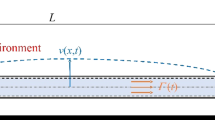Abstract
Based on the analysis of experimental data, the influence of incidence angle on the blade loading and profile loss (hereinafter referred to as loss) in flat turbine cascades of axial turbines is refined. Wide ranges of geometric and operating parameters of sub- and transonic planner cascade are covered. It is shown that a negative incidence angle in terms of its effect on loss is a more complex phenomenon than a positive one. In the range of its moderate values, when a high velocity peak has not yet appeared on the blade pressure side near the leading edge, the improvement in loading on the suction side can overpower the deterioration in loading on the pressure side and incidence losses can become negative. Most cascades have a range of these negative incidence angle, in which the incidence angle loss is zero or first decreases, reaches a negative minimum, and then begins to increase. As the cascade convergence increases, the width of this range increases, and the losses decrease. As a rule, negative losses from the incidence angle are found in cascades in which, there is a velocity peak on the suction side near the edge under the design incidence. If a cascade with reduced convergence ratio and significant local diffusion ratio of the channel has a high velocity peak near the leading edge on the pressure side, then negative incidence angle leads to an increase in loss. To calculate the loss versus the incidence angle, it is advisable to divide the cascades into groups depending on the nature of the change in the loss versus the incidence angle and to establish the ranges of values of the main geometric parameters of the cascades common for each group.








Similar content being viewed by others
REFERENCES
E. A. Gukasova, M. I. Zhukovskii, A. M. Zavadovskii, L. M. Zysina-Molozhen, N. A. Sknar’, and V. G. Tyryshkin, Aerodynamic Perfection of Steam and Gas Turbine Blade Systems (Gosenergoizdat, Moscow, 1960) [in Russian].
M. E. Deich, G. A. Filippov, and L. Ya. Lazarev, Atlas of Axial Turbine Blade Cascade Profiles (Mashinostroenie, Moscow, 1965) [in Russian].
V. D. Venediktov, A. V. Granovskii, A. N. Karelin, A. N. Kolesov, and M. Kh. Mukhtarov, Atlas of Experimental Characteristics of Flat Cascades of Cooled Gas Turbines (TsIAM, Moscow, 1990) [in Russian].
V. D. Venediktov and N. E. Sokolova, Atlas of Experimental Characteristics of Flat Cascades of Axial Turbines (TsIAM, Moscow, 1996) [in Russian].
V. Kh. Abiants, Theory of Aircraft Gas Turbines (Mashinostroenie, Moscow, 1979) [in Russian].
B. I. Mamaev, A. V. Starodumov, and S. A. Poluboyarinova, “Influence of the airfoil leading edge thickness on turbine cascade losses due to the incidence,” Russ. Aeronaut. 62, 274–280 (2019).
O. N. Emin and G. N. Lysenko, “Investigation of flows and losses in flat turbine cascades at large negative angles of attack,” Teploenergetika, No. 1, 73–75 (1971).
G. N. Abramovich, Applied Gas Dynamics (Nauka, Moscow, 1976; Defense Technical Information Center, Ft. Belvoir, 1973).
B. M. Aronov, A. K. Bogatyrev, V. M. Epifanov, B. I. Mamaev, and I. B. Shkurikhin, “Experimental study of the influence of the design entry angle on the efficiency of the designed profile cascades,” Izv. Vyssh. Uchebn. Zaved., Aviats. Tekh., No. 3, 111–115 (1975).
Author information
Authors and Affiliations
Corresponding author
Rights and permissions
About this article
Cite this article
Mamaev, B.I., Ermolaev, G.V. Study of Turbine Cascades at Negative Incidence Angles. Therm. Eng. 70, 215–222 (2023). https://doi.org/10.1134/S0040601523030035
Received:
Revised:
Accepted:
Published:
Issue Date:
DOI: https://doi.org/10.1134/S0040601523030035




